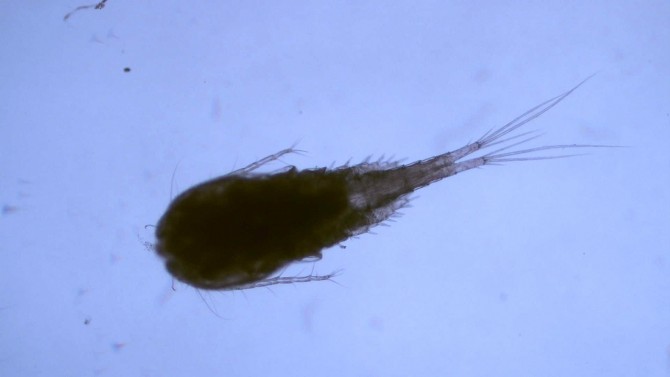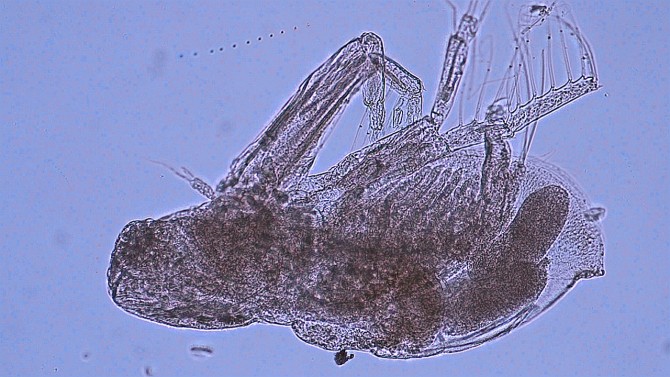Nonnative zooplankton species found in Lake Erie
By Blaine Friedlander
Cornell aquatic taxonomists have detected two new nonnative zooplankton species in the Great Lakes – their fourth such discovery in the past two years.
After 10 years of finding no new invasive zooplankton in the Great Lakes, discovering several in recent years is significant.
“We need to know which species are present in the Great Lakes now, so we can determine when they arrive,” said Lars Rudstam, professor of natural resources and director of Cornell’s Biological Field Station at Shackelton Point, in Bridgeport, New York. “When new species are found, like the four we found since 2016, we need to know how they arrived to the lakes, so we can prevent additional introductions in the future.”
Rudstam and James Watkins, research associate at the field station, are co-principal investigators on a Great Lakes Restoration Initiative project, which is funded by a grant from the U.S. Environmental Protection Agency’s Great Lakes National Program Office.
Fish feed on zooplankton. When zooplankton populations drop, problems reverberate throughout the food chain. About 65 million pounds of Great Lakes fish are harvested annually, contributing more than $1 billion to the economy, according to the National Oceanic and Atmospheric Administration’s Great Lakes Environmental Research Laboratory.
The newly discovered species are a water flea (the cladoceran Diaphanosoma fluviatile) and a copepod (Mesocyclops pehpeiensis), which were discovered by taxonomists Elizabeth Whitmore and Joseph Connolly of the Cornell Biological Field Station from samples taken aboard an EPA research vessel Lake Guardian in western Lake Erie.
The water flea is native to South America and the Caribbean, and has been found in Florida, Louisiana and Texas. The Lake Erie observation marks a northward expansion for the species, said Rudstam. The newly discovered copepod is native to Asia and was introduced into southern U.S. in the 1990s.
Last year, the rotifer Brachionus leydigii was discovered and the copepod Thermocyclops crassus was reported in 2016 by the same Cornell team, in cooperation with the EPA and the U.S. Fish and Wildlife Service. The Great Lakes now contain more than 180 nonnative aquatic species.
To find the latest nonnative zooplankton, Connolly and Whitmore sorted through thousands of specimens through high-power microscopes looking for key taxonomic characteristics. Whitmore is currently on the Lake Guardian about to sample Lake Erie and Connolly will next week board the same vessel to sample Lake Superior. A team of six taxonomists will continue to sort through specimens in the Cornell’s Biological Field Station lab to document any changes in abundance or spread of these species to other places in the Great Lakes.
Media Contact
Get Cornell news delivered right to your inbox.
Subscribe


